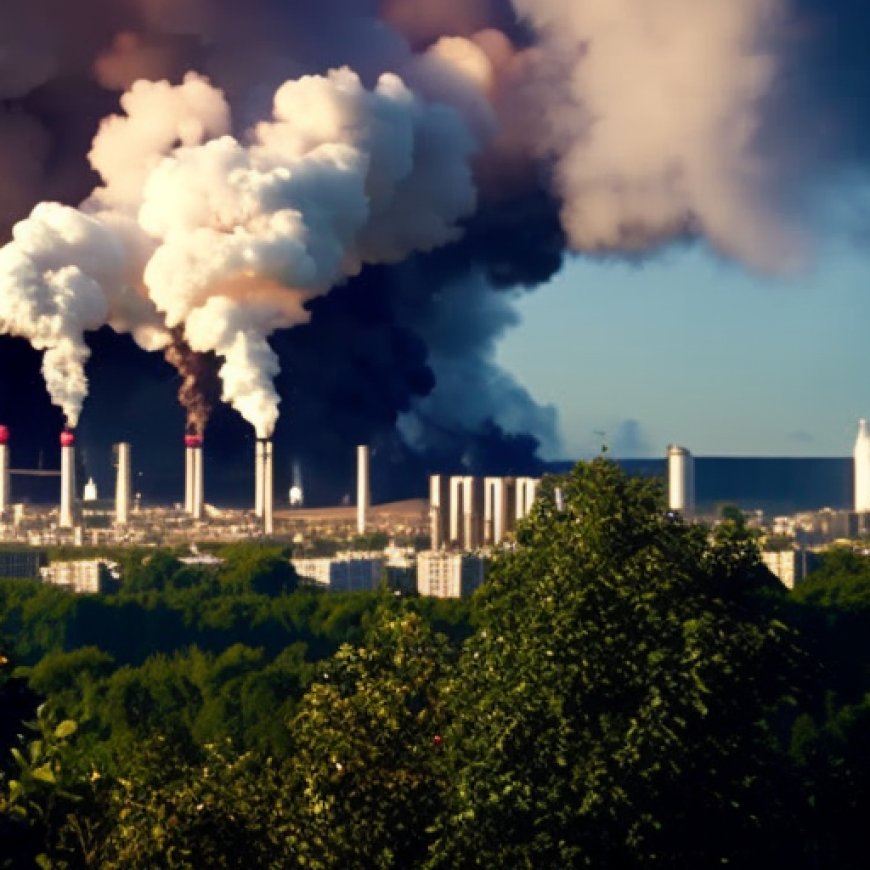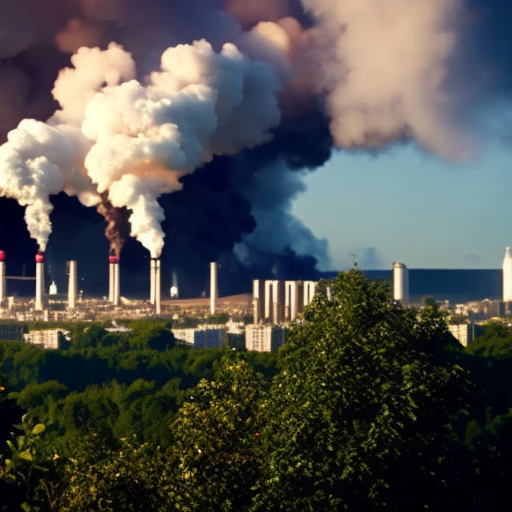Top 10 Most Polluted Countries in 2024: Causes, Impacts, and Solutions
Top 10 Most Polluted Countries in 2024: Causes, Impacts, and Solutions Qrius


Introduction: Understanding the Gravity of Air Pollution
Air pollution transcends geographical boundaries, affecting nations across the globe irrespective of their developmental status. From bustling metropolises to remote rural areas, no region is immune to the adverse effects of polluted air. This article sheds light on the top 10 most polluted countries in 2024, highlighting the urgent need for concerted action to address this pressing environmental challenge.
Quick Overview: Top 10 Most Polluted Countries in 2024
-
Dhaka, Bangladesh: Battling Urbanization and Industrial Emissions
- Urban congestion and vehicular emissions
- Industrial pollution from brick kilns and factories
Despite these measures, Dhaka continues to face significant challenges in curbing air pollution and safeguarding public health.
-
Lahore, Pakistan: Battling Seasonal Smog and Industrial Pollution
- Temperature inversion exacerbates smog formation
- Industrial emissions and crop burning contribute to particulate matter in the air
Despite these efforts, Lahore continues to struggle with hazardous levels of air pollution, necessitating sustained action from authorities.
-
Begusarai, India: Unraveling the Mystery Behind Pollution Sources
- Predominance of solid fuel burning for cooking and heating
- Inadequate waste management practices leading to open burning of garbage
Efforts to improve air quality in Begusarai are underway, but concerted action is required to address the root causes of pollution effectively.
-
Khujand, Tajikistan: Battling Industrial Emissions and Urban Growth
- Industrial emissions from cement and power plants
- Vehicle exhaust due to increasing urbanization and traffic congestion
Khujand’s journey toward cleaner air involves a combination of regulatory measures and public awareness campaigns.
-
Ouagadougou, Burkina Faso: Addressing Air Quality Concerns in Urban Centers
- Increasing vehicular emissions due to urbanization
- Industrial activities contributing to particulate matter in the air
Efforts to combat air pollution in Ouagadougou aim to safeguard public health and promote sustainable urban development.
-
Erbil, Iraq: Tackling Urbanization and Industrialization
- Urban expansion leading to increased vehicular emissions
- Industrial activities releasing pollutants into the air
Erbil’s efforts to combat air pollution focus on balancing urban development with environmental sustainability.
-
Dubai, UAE: Balancing Development and Environmental Conservation
- High traffic congestion leading to increased vehicular emissions
- Industrial activities contributing to air pollution levels
Dubai’s commitment to sustainable development includes measures to improve air quality and enhance the well-being of its residents.
-
Kathmandu, Nepal: Addressing Air Quality Challenges in the Himalayan Valley
- Geographical conditions leading to the trapping of pollutants in the valley
- Increasing vehicular emissions and industrial activities
Kathmandu’s efforts to improve air quality focus on collaborative initiatives involving government, industries, and the community.
-
Cairo City, Egypt: Addressing Pollution Challenges in a Megacity
- Heavy traffic congestion leading to vehicular emissions
- Industrial activities and open waste burning contributing to air pollution levels
Cairo’s efforts to combat air pollution aim to create a healthier environment for its residents and future generations.
-
Kinshasa, Democratic Republic of the Congo: Addressing Air Quality Concerns in a Growing Megacity
- High population density leading to increased vehicular emissions
- Limited infrastructure for waste management contributing to pollution levels
Kinshasa’s journey toward cleaner air involves collaborative efforts to address the root causes of air pollution and promote sustainable development.
Conclusion
In conclusion, air pollution remains a pressing global issue affecting cities around the world. From Dhaka to Kinshasa, urban areas face significant challenges in maintaining clean air amidst rapid urbanization, industrial growth, and population expansion. The health impacts of air pollution are profound, with respiratory illnesses and cardiovascular diseases on the rise. However, efforts to combat air pollution are underway, with cities implementing stricter emission standards, promoting sustainable transportation, and adopting green initiatives. Collaborative solutions involving government, industries, and communities are essential to address the root causes of air pollution and create a healthier environment for current and future generations.
FAQs (Frequently Asked Questions)
- What are the main causes of air pollution in urban areas?
- How does air pollution affect public health?
- What measures are cities implementing to combat air pollution?
- What role do individuals play in reducing air pollution?
Urban areas face air pollution challenges due to factors such as vehicular emissions, industrial activities, and geographical conditions that trap pollutants.
Air pollution can lead to respiratory illnesses, cardiovascular diseases, and other health issues, particularly among vulnerable populations such as children and the elderly.
Cities are implementing measures such as stricter emission standards for vehicles and industries, promotion of sustainable transportation, and adoption of green initiatives to reduce air pollution levels.
<
SDGs, Targets, and Indicators
| SDGs | Targets | Indicators |
|---|---|---|
| SDG 3: Good Health and Well-being | Target 3.9: By 2030, substantially reduce the number of deaths and illnesses from hazardous chemicals and air, water, and soil pollution and contamination | Indicator 3.9.1: Mortality rate attributed to household and ambient air pollution |
| SDG 11: Sustainable Cities and Communities | Target 11.6: By 2030, reduce the adverse per capita environmental impact of cities, including by paying special attention to air quality and municipal and other waste management | Indicator 11.6.2: Annual mean levels of fine particulate matter (e.g. PM2.5 and PM10) in cities (population weighted) |
| SDG 13: Climate Action | Target 13.2: Integrate climate change measures into national policies, strategies, and planning | Indicator 13.2.1: Number of countries that have communicated the strengthening of institutional, systemic, and individual capacity-building to implement adaptation, mitigation, and technology transfer |
1. Which SDGs are addressed or connected to the issues highlighted in the article?
SDG 3: Good Health and Well-being
This SDG is connected to the issues highlighted in the article because air pollution has significant impacts on human health, leading to respiratory illnesses and cardiovascular diseases.
SDG 11: Sustainable Cities and Communities
This SDG is addressed in the article as air pollution is a challenge faced by urban areas. The article discusses the pollution levels in various cities and the need for sustainable urban development.
SDG 13: Climate Action
This SDG is connected to the issues discussed in the article as air pollution is a contributor to climate change. The article mentions the need to integrate climate change measures into national policies and strategies.
2. What specific targets under those SDGs can be identified based on the article’s content?
Target 3.9: By 2030, substantially reduce the number of deaths and illnesses from hazardous chemicals and air, water, and soil pollution and contamination
This target can be identified based on the article’s content as it highlights the adverse health impacts of air pollution and the need to reduce deaths and illnesses caused by polluted air.
Target 11.6: By 2030, reduce the adverse per capita environmental impact of cities, including by paying special attention to air quality and municipal and other waste management
This target is addressed in the article as it emphasizes the importance of reducing the adverse impact of cities on the environment, specifically mentioning the need to pay attention to air quality.
Target 13.2: Integrate climate change measures into national policies, strategies, and planning
This target is connected to the issues discussed in the article as it highlights the importance of integrating climate change measures, including addressing air pollution, into national policies and strategies.
3. Are there any indicators mentioned or implied in the article that can be used to measure progress towards the identified targets?
Indicator 3.9.1: Mortality rate attributed to household and ambient air pollution
This indicator can be used to measure progress towards Target 3.9. It measures the mortality rate specifically attributed to air pollution, both from household and ambient sources.
Indicator 11.6.2: Annual mean levels of fine particulate matter (e.g. PM2.5 and PM10) in cities (population weighted)
This indicator can be used to measure progress towards Target 11.6. It measures the annual mean levels of fine particulate matter, such as PM2.5 and PM10, in cities, taking into account the population weight.
Indicator 13.2.1: Number of countries that have communicated the strengthening of institutional, systemic, and individual capacity-building to implement adaptation, mitigation, and technology transfer
This indicator can be used to measure progress towards Target 13.2. It measures the number of countries that have communicated their efforts to strengthen capacity-building for implementing climate change adaptation, mitigation, and technology transfer.
SDGs, Targets, and Indicators
| SDGs | Targets | Indicators |
|---|---|---|
| SDG 3: Good Health and Well-being | Target 3.9: By 2030, substantially reduce the number of deaths and illnesses from hazardous chemicals and air, water, and soil pollution and contamination | Indicator 3.9.1: Mortality rate attributed to household and ambient air pollution |
| SDG 11: Sustainable Cities and Communities | Target 11.6: By 2030, reduce the adverse per capita environmental impact of cities, including by paying special attention to air quality and municipal and other waste management | Indicator 11.6.2: Annual mean levels of fine particulate matter (e.g. PM2.5 and PM10) in cities (population weighted) |
| SDG 13: Climate Action | Target 13.2: Integrate climate change measures into national policies, strategies, and planning | Indicator 13.2.1: Number of countries that have communicated the strengthening of institutional, systemic, and individual capacity-building to implement adaptation, mitigation, and technology transfer |
Behold! This splendid article springs forth from the wellspring of knowledge, shaped by a wondrous proprietary AI technology that delved into a vast ocean of data, illuminating the path towards the Sustainable Development Goals. Remember that all rights are reserved by SDG Investors LLC, empowering us to champion progress together.
Source: qrius.com

Join us, as fellow seekers of change, on a transformative journey at https://sdgtalks.ai/welcome, where you can become a member and actively contribute to shaping a brighter future.







